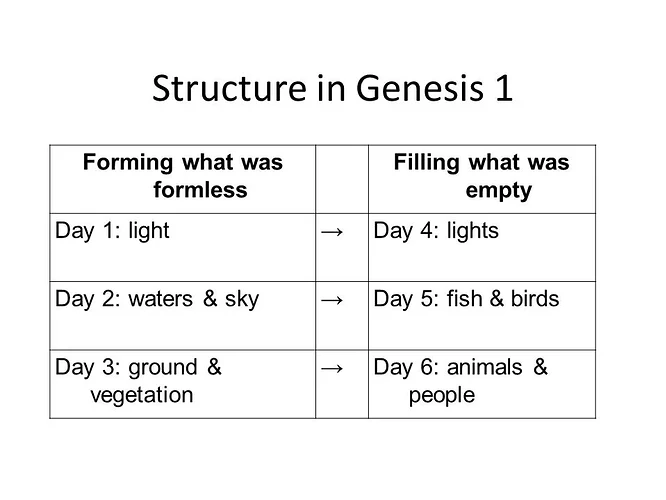“Not able”? You mean not able to remake Moses’ mind so he would write in a way that fits modern Western ideas of how a creation account should read? No – YHWH-Elohim was not able to do that, because it would have been contrary to His character – taking over people’s minds is what demons do, not Yahweh.
When God gives a vision, the writers tell us it was a vision. I will not add to the text by claiming it is something that it does not claim.
“Needed”? No, but it was effective; it was extremely clear communication to people who had left Egypt behind and were still uncertain (as we know they were from the rest of the Pentateuch)
That’s what he changed. He left in the gods but showed that YHWH-Elohim had created them, even demoting them to just things that were supposed to be His servants – it painted Egypt’s pantheon not just as lesser that YHWH-Elohim but as very disobedient servants, something that would have resonated with the people who had left servitude behind and understood the omportance of obedience.
That’s a modern fancy; there’s nothing in the text to suggest it.
So God imposed on Moses’ mind a modern Western literary form?
No one back then would have understood the first Creation story literally, and if you told them that was the way to read it they would have laughed because they would have recognized the three messages from the literary types.
To be blunt, physicists have no expertise in ancient literature, so their opinions are worth little more than that of a drunk on the street. That they can make Genesis fit their science means nothing, any more than the ability of early medieval rabbis and Christian theologians to make it fit their science of four earthly elements of air, earth, fire, and water.
What’s wrong with that is that before trying to fit science to this piece of ancient literature, we first have to understand that literature as the original audience would have, because that is its meaning.
“Our modern understanding” is the key. Those scholars in the Middle Ages could explain how it fit with their understanding of science, with explanations that to a modern Western mind read as ludicrous and even superstitious. It is an error to read any ancient literature as though it was written to fit our worldviews; people have tried to do that down through the centuries and every such attempt has looked to later generations as wasted effort at best, and to contemporaries all too often as heresy (all the Christological heresies of the first half-dozen centuries came from trying to fit the scriptures to fit people’s worldviews, primarily Greek philosophies).
Since this method – trying to make the scriptures fit our worldview(s) – has produced serious heresies in the past it should be avoided. It makes two errors: that the current understanding of the world is correct, and that the scriptures were written to the current generation.
